Kubernetes Networking Deep Dive
Kubernetes Ingress
Ingress Overview
Accessing applications from outside a Kubernetes cluster is essential for serving users at scale. Kubernetes uses an abstraction called Ingress to route external HTTP/HTTPS traffic to services within the cluster. By defining hostname- and path-based rules, Ingress acts as a reverse proxy or load balancer, enabling:
- Multiple services under a single IP
- SSL/TLS termination at the edge
- Name-based virtual hosting
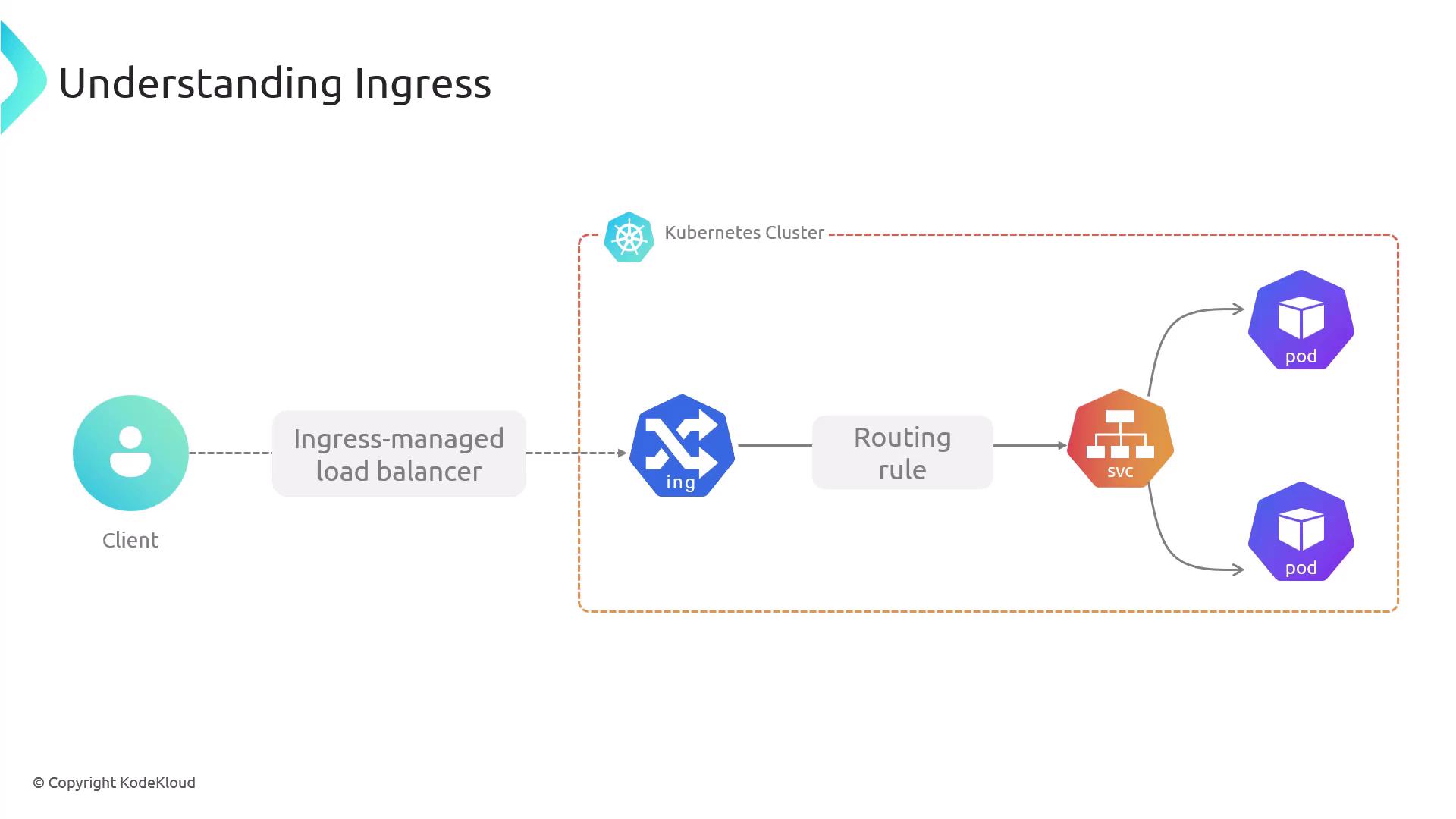
Creating an Ingress resource has no effect until you deploy an Ingress Controller, which watches those resources and configures the edge component—such as NGINX or a cloud load balancer—to implement your routing rules.
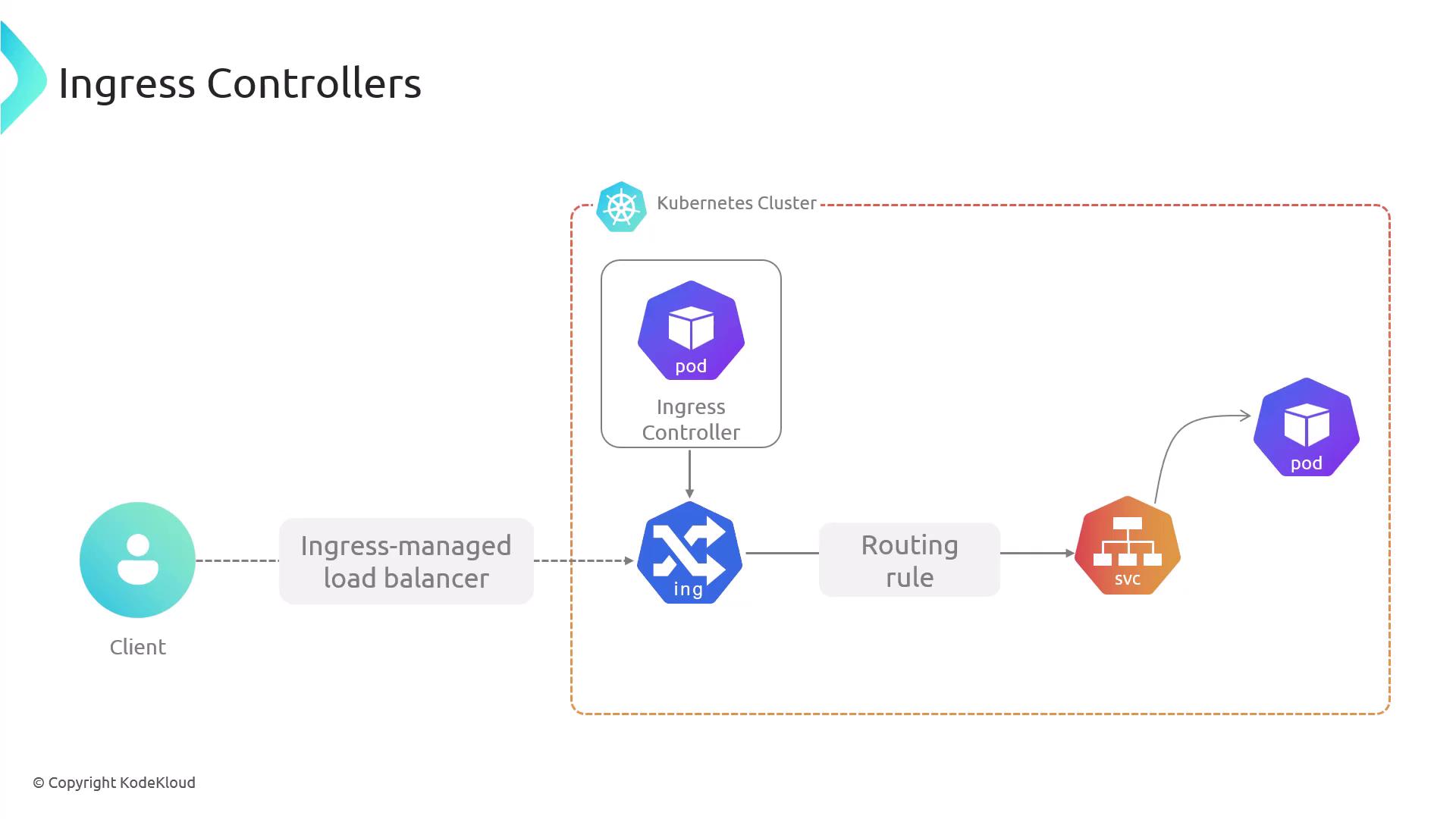
Ingress Controllers run as pods in your cluster, providing scalability and self-healing. Many offer SSL/TLS termination, authentication, and DNS integration. Some popular controllers include:
| Controller | Features |
|---|---|
| NGINX Ingress Controller | Widely adopted, rich annotation support |
| Traefik | Dynamic configuration, Let’s Encrypt |
| HAProxy Ingress | High performance, advanced routing rules |
Cloud platforms like AWS, GKE, and AKS also provide managed controllers that integrate with their load balancers and DNS services.
Ingress vs. Service
| Aspect | Service (NodePort/LoadBalancer) | Ingress |
|---|---|---|
| Protocols | TCP/UDP, HTTP | HTTP/HTTPS only |
| Port Exposure | Arbitrary ports | Ports 80 and 443 |
| Routing | None | Host- and path-based |
| TLS Termination | Not supported | Built-in at the edge |
| Virtual Hosting | No | Name-based |
Services are straightforward to configure, but Ingress provides greater control over HTTP traffic management, security, and virtual hosting.
Anatomy of an Ingress Resource
An Ingress resource uses the standard Kubernetes schema: apiVersion, kind, metadata, and spec. Key spec fields include:
- Ingress Rules
- Default Backend
- Resource Backend
- Path Types
- Annotations
- TLS Configuration
1. Ingress Rules
Rules map hostnames and URL paths to specific services and ports. You can route different paths or domains to separate backends.
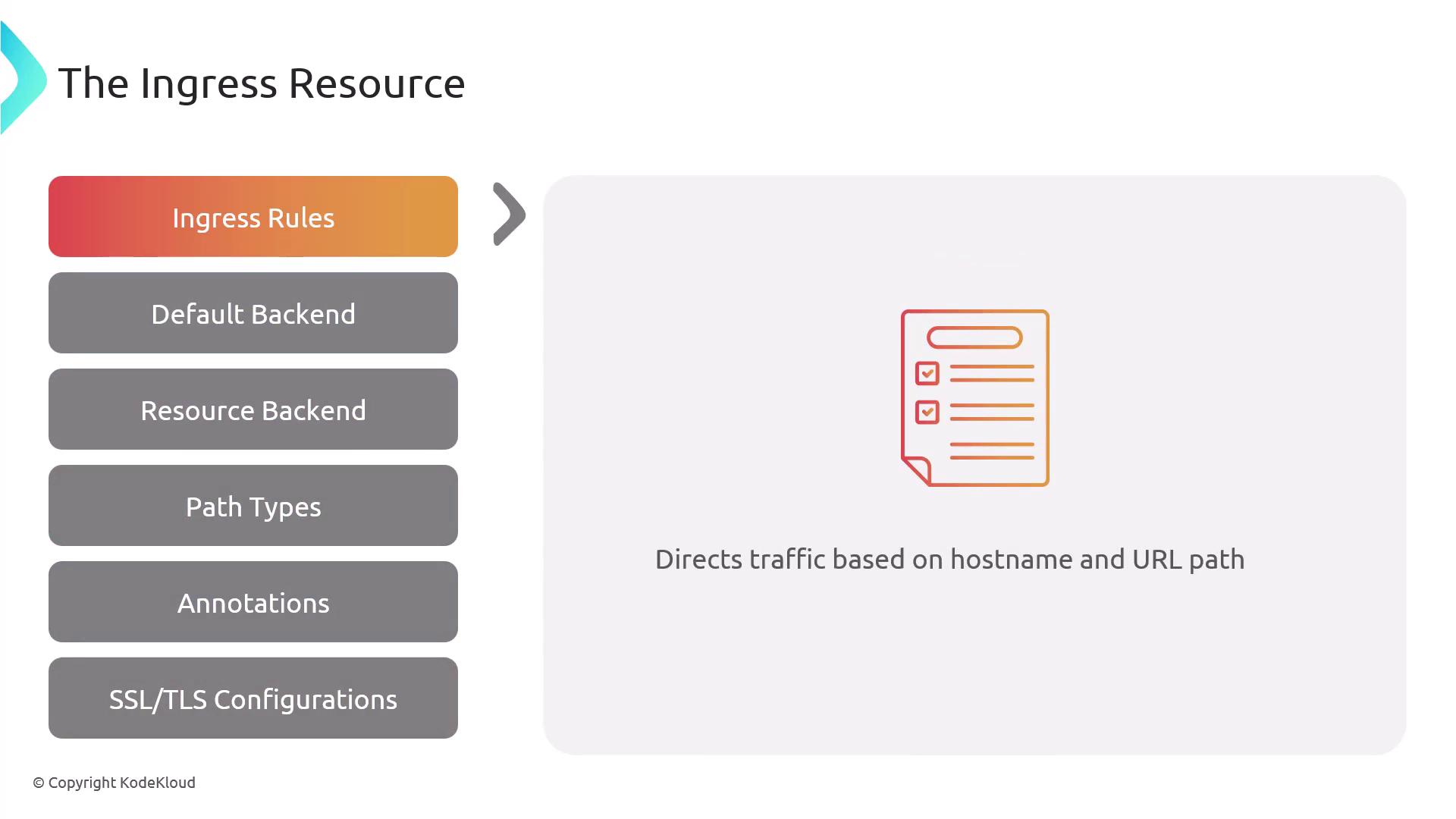
2. Default Backend
The default backend handles requests that don’t match any rule, forwarding them to a specified service and port.

3. Resource Backend
You can reference another Kubernetes resource (in the same namespace) instead of a service. Mixing service and resource in the same backend is invalid.
Note
Resource backends were supported in earlier APIs (e.g., networking.k8s.io/v1beta1) but are not part of the current networking.k8s.io/v1 spec. Controller support varies.
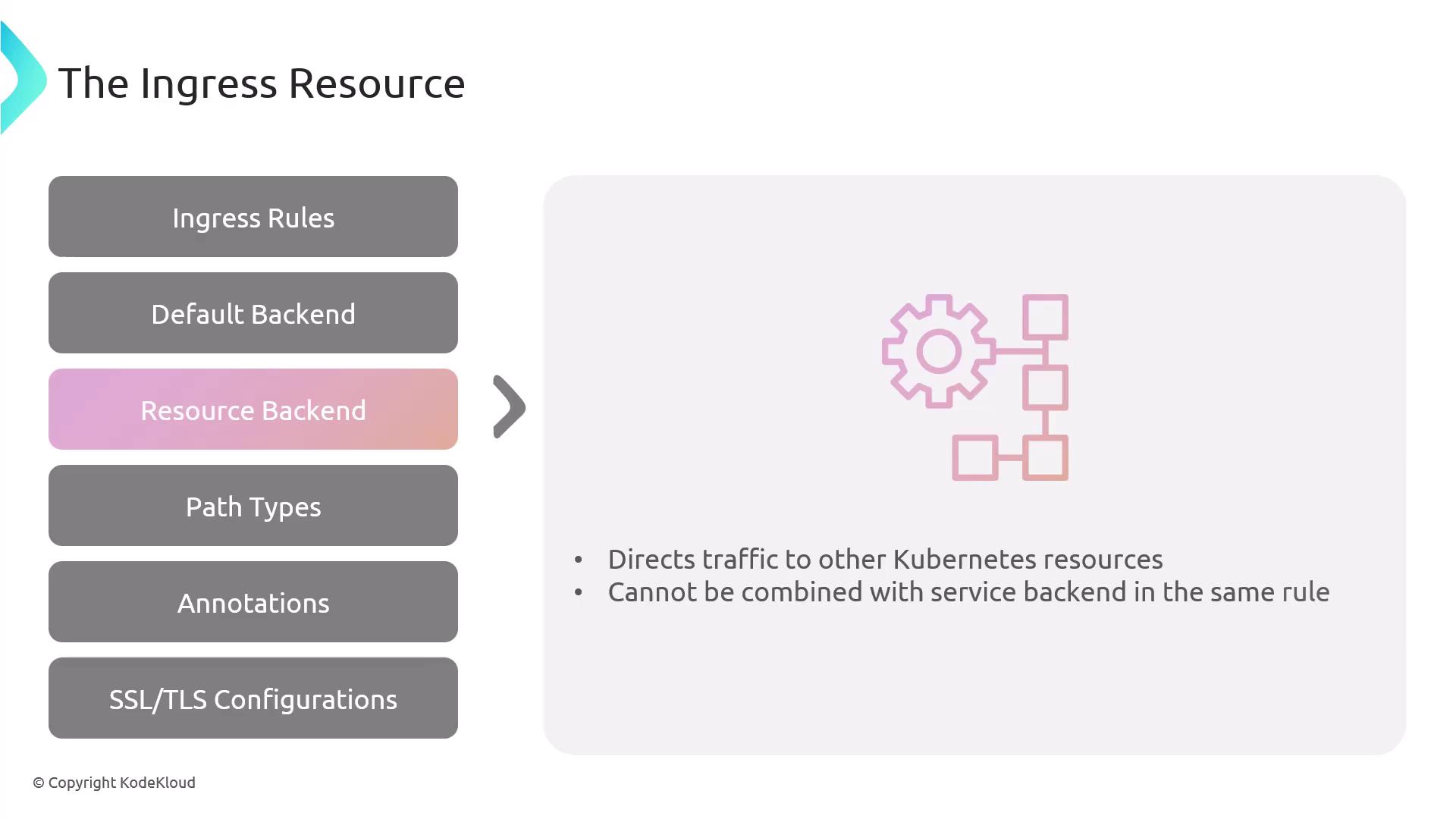
4. Path Types
Path types determine how the Ingress Controller matches request URLs:
| Path Type | Behavior |
|---|---|
| Exact | Matches the full path exactly |
| Prefix | Matches based on the URL prefix |
| ImplementationSpecific | Controller-defined matching logic |

5. Annotations
Annotations enable controller-specific features like SSL redirection, URL rewrites, or rate limiting.
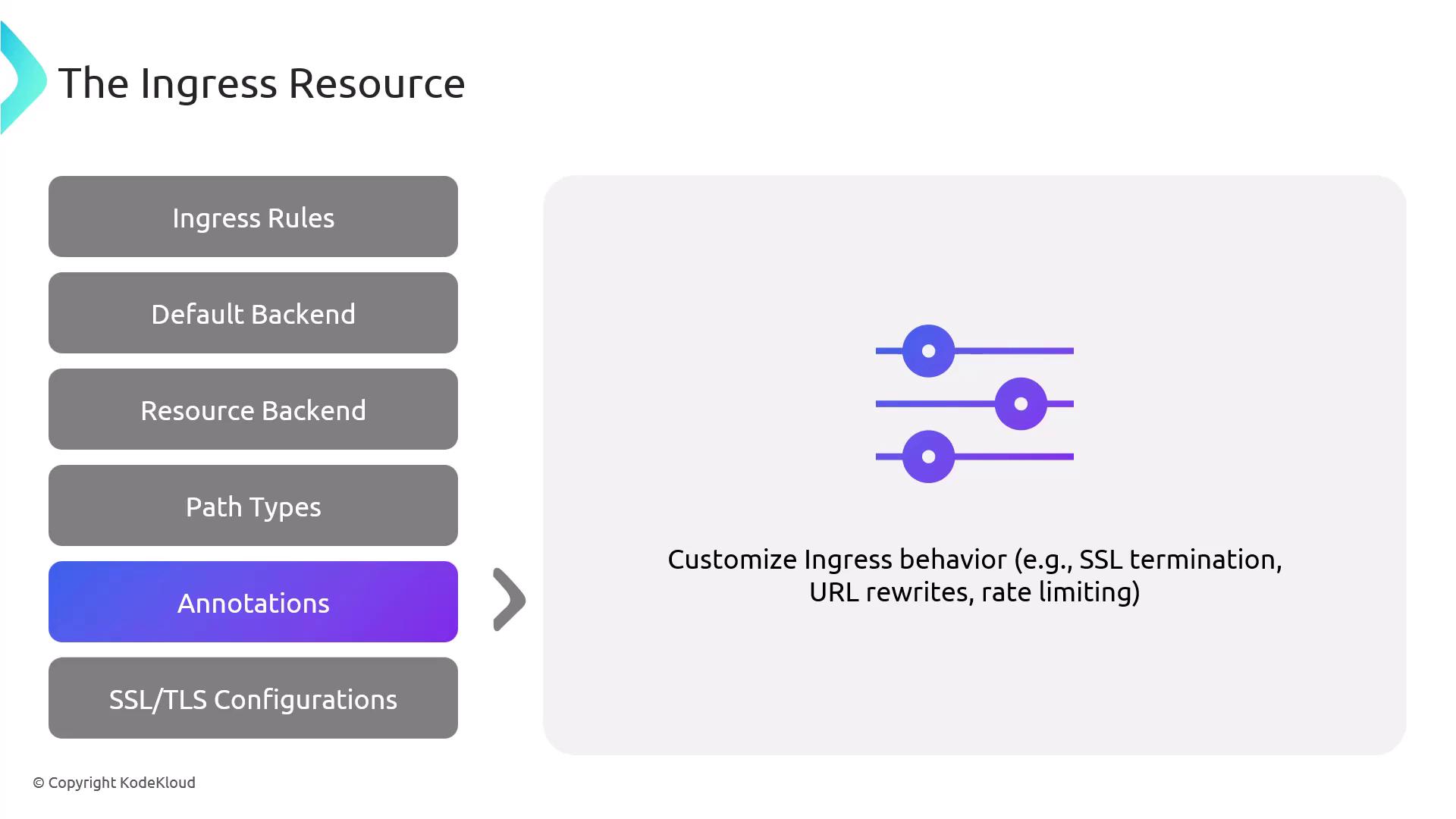
6. TLS Configuration
Specify TLS by referencing Kubernetes Secrets that store certificates and private keys. This configures HTTPS at the Ingress gateway.
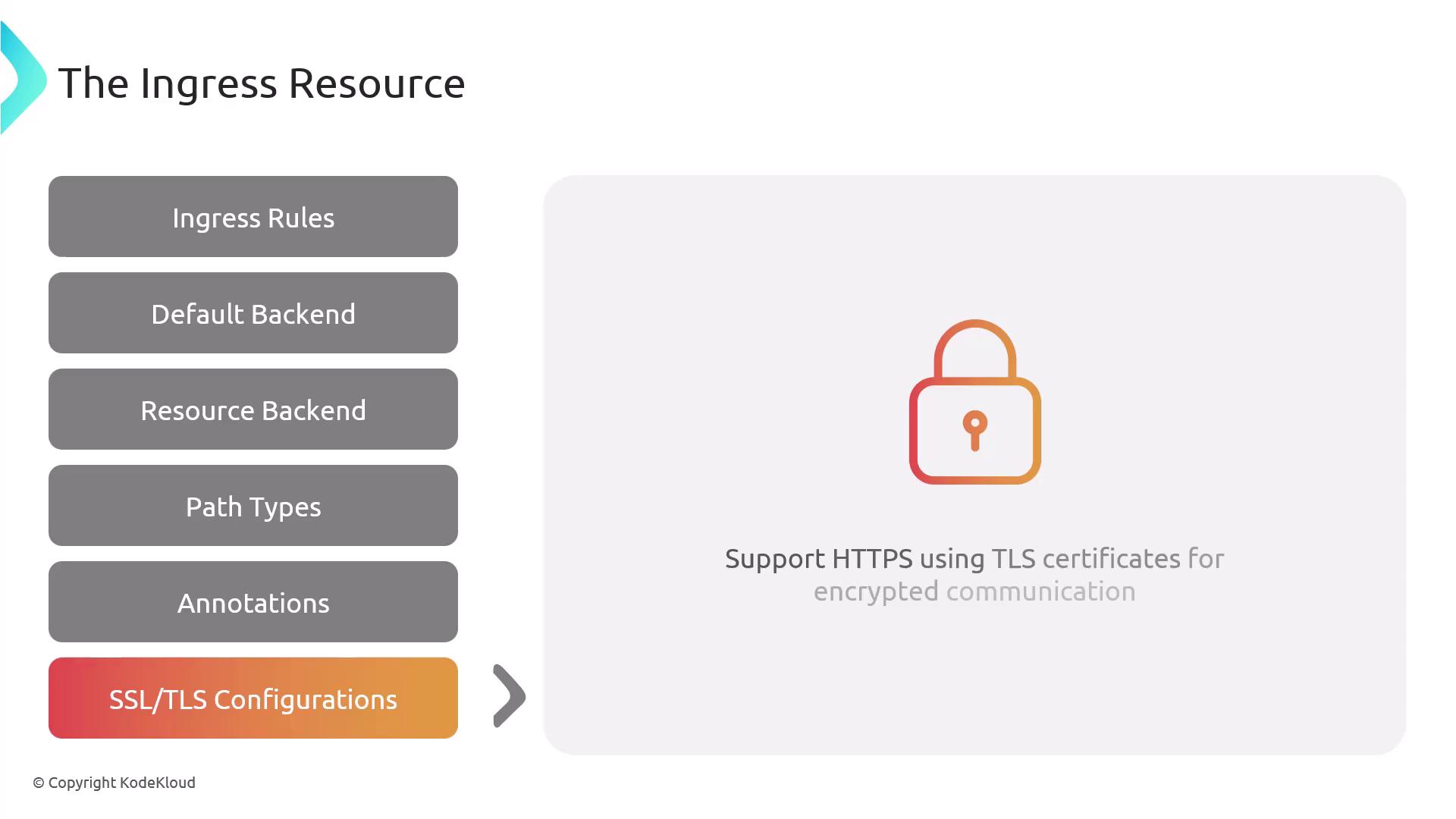
Minimal Ingress Example
This example defines a defaultBackend for unmatched requests and a rule that routes example.com/web* (prefix match) to web-service:80.
apiVersion: networking.k8s.io/v1
kind: Ingress
metadata:
name: example-ingress
namespace: default
spec:
defaultBackend:
service:
name: default-service
port:
number: 80
rules:
- host: "example.com"
http:
paths:
- path: /web
pathType: Prefix
backend:
service:
name: web-service
port:
number: 80
All traffic not matching /web is sent to default-service:80.
Common Ingress Patterns
- Single-Service Ingress: Routes all traffic to one backend.
- Simple Fan-Out: Path-based routing to multiple services.
- Name-Based Virtual Hosting: Hostname-based routing for multiple domains.
- TLS/SSL Termination: Decrypts HTTPS at the edge and forwards HTTP to services.
![]()
Controller support and advanced features may vary. Use annotations or Custom Resource Definitions (CRDs) to extend behavior.
Key Benefits of Ingress
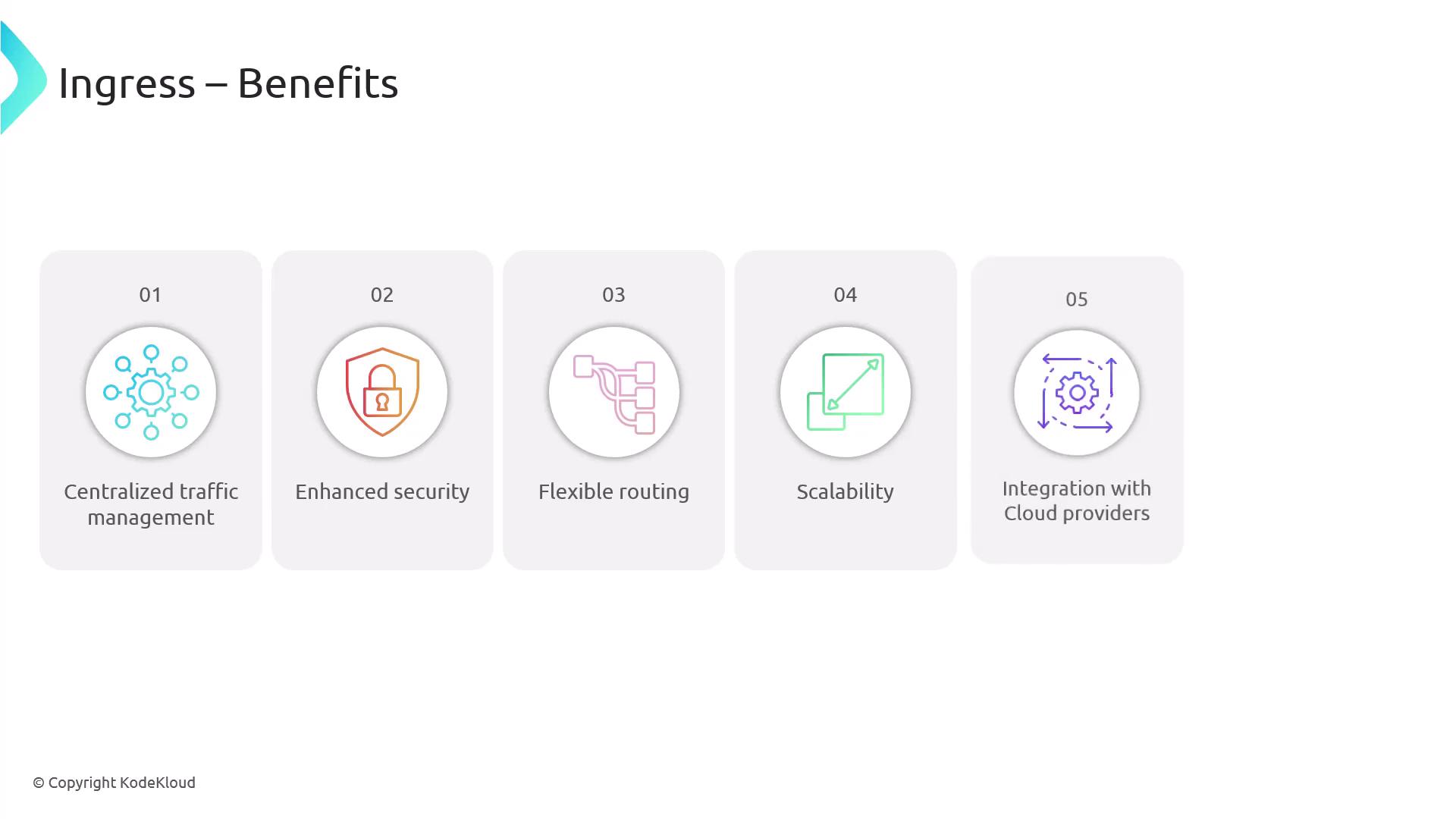
- Centralized traffic management through a single entry point
- Simplified certificate handling with edge SSL/TLS termination
- Flexible path- and host-based routing for complex architectures
- Auto-scaling and high availability via Kubernetes controllers
- Native integration with cloud load balancers, DNS, and managed certificates
Ingress gives you powerful, centralized control over external HTTP/HTTPS access to your Kubernetes workloads. Next, we’ll dive into Ingress Controllers and deployment strategies.
Watch Video
Watch video content